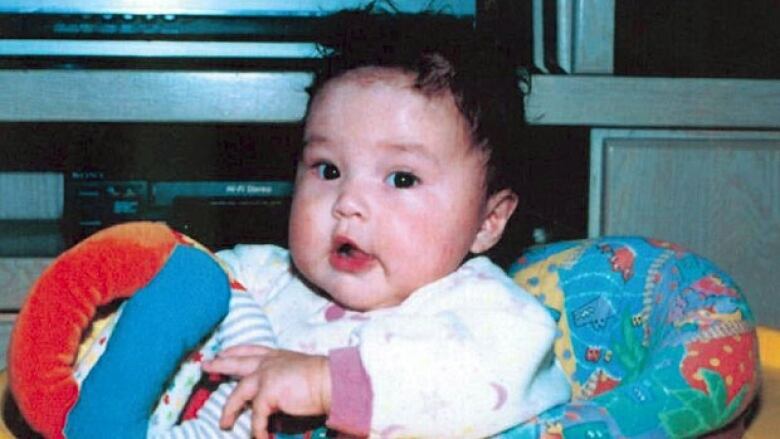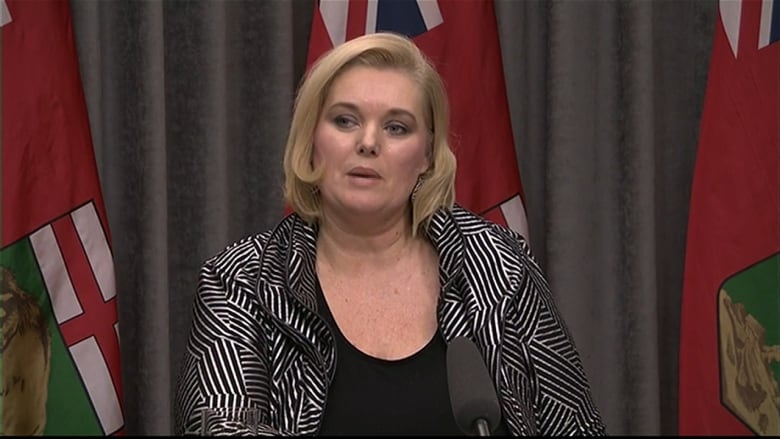Phoenix Sinclair inquiry: Covering it was a 'harrowing' experience
CBC reporter Katie Nicholson covered the inquiry into the child's death

This week, Manitoba announced it was on track to realize 26 of 62 recommendations stemming from the Phoenix Sinclair Inquiry.The little girl was killed by her mother and stepfather after slipping through the cracks of the child welfare system. CBC's Katie Nicholson covered the inquiry and writes about the experience.
It was another one of those frantic days. I was running down the hall with six or seven tapes from the inquiry in my hand, a TV script to write, radio clips to put together for the morning and a blog post to somehow string together before crashing out.
- Phoenix Sinclair inquiry prompts Manitoba to keep kids out ofCFScare
- Manitoba sorry for failing to protect Phoenix Sinclair
I was so in my own head that I walked smack into one of my colleagues a big, burly guy.
We laughed about it, but as I was about to tear off again, I felt his hand clasp my arm.
How are you doing? he asked. He looked straight into my eyes with compassion. I knew what he meant.
He meant: How are you doing with this inquiry? With the horrible facts of it, with the daily human tragedy of people who worked in a system that failed a vulnerable child. He meant: Are you taking it home with you? Are you sleeping OK? Are you drinking too much to cope?
I shifted uncomfortably and probably made some comment about making my five oclock deadline. He let me know the union could get me a counsellor if I felt it was becoming too much.
Little time for reflection
Winnipeg's Phoenix Sinclair was just five years old when she was killed in June of 2005 by her mother, Samantha Kematch, and her boyfriend, Karl McKay.
Both had violent records, and despite multiple contacts with child welfare officials and several apprehensions, Phoenix ended up in their care.

What most people find particularly horrifying about her death is that it went undetected for nine months.Phoenix simply vanished, until tips led police to her body buried beneath the snow near the dump on Fisher River First Nation.
Covering an inquiry is a major undertaking for news organizations. Its a daily grind of juggling resources, hearings, scrums with lawyers and witnesses.
Theres little time for reflection.
But theres no denying the Phoenix Sinclair inquiry was difficult to sit through. For the better part of a year, it was my life.
I heard, in minute detail, how each and every person in the child welfare system came into contact with her: some fumbled her file, some did their best, others did their job to the letter.
But there would be no surprises as the inquiry followed the narrative of her tragedy. At the end, she would still die on a cold basement floor at the hands of Karl McKay and Samantha Kematch.
It felt, at times, as though we were replaying a fatal car crash in slow motion. The outcome could never be anything but stomach-turning, but at least we knew exactly how it happened.
Some days were downright boring and process-laden with legalese; after all, there were 20 some-odd lawyers in the room on any given day.
But some days were simply harrowing.
Harrowing testimony
I remember hearing from the last two social workers who had a chance to see her before her mother packed her up and took her to Fisher River.
They stood outside Kematch's Winnipeg apartment but never got past the door. Phoenixs mother wouldnt let them inside and they didnt push the issue.
Had they gone inside, witnesses said, they might have found the little girl locked in a room.There might have been another apprehension that could have changed the course of events. Those were heavy days.
I doubt anyone who covered the inquiry will forget when family and friends of McKay and Kematch took the stand.
While I was covering this case, people often asked me how it was that no one reported the little girl was being neglected and abused in Fisher River and how it was that no one reported her missing after she had been killed.
Nearly a decade later, the fear in the voices of the people who knew but didnt tell was still palpable.Those who witnessed her abuse and her death were young and fearful of McKay and Kematch.
There was something else: An almost pathological distrust of the authorities and child welfare agencies such a critical issue, and one the province is trying to change with the creation of an Indigenous Childrens Advocate.
Systemic problems
Its been almost two years since I first started covering the inquiry.Since then, Commissioner Ted Hughes made 62 recommendations to improve the child welfare system.The province says 26 of them are on their way to becoming reality.

These recommendations address the problems in the system from when Phoenix was a child in care, most of which linger today.
While they are a step in the right direction, these recommendations are hardly a magic bullet.Since the time Phoenix was in care, the number of kids in child and family services has almost doubled. Eighty-seven per cent of them are First Nations children and an unlucky few still slip through the cracks and die of neglect and abuse.
There will be another Phoenix Sinclair the name, the face and the circumstances will be different, but there will be another tragedy that prompts an inquiry.
Reporters will cover it, and the details will be tough but necessary because, to be honest, covering such an inquiry and helping the public understand is an honour and a privilege. And hopefully, in those uncomfortable details, there is truth and a motivation for change.












_(720p).jpg)


 OFFICIAL HD MUSIC VIDEO.jpg)
.jpg)



























































































